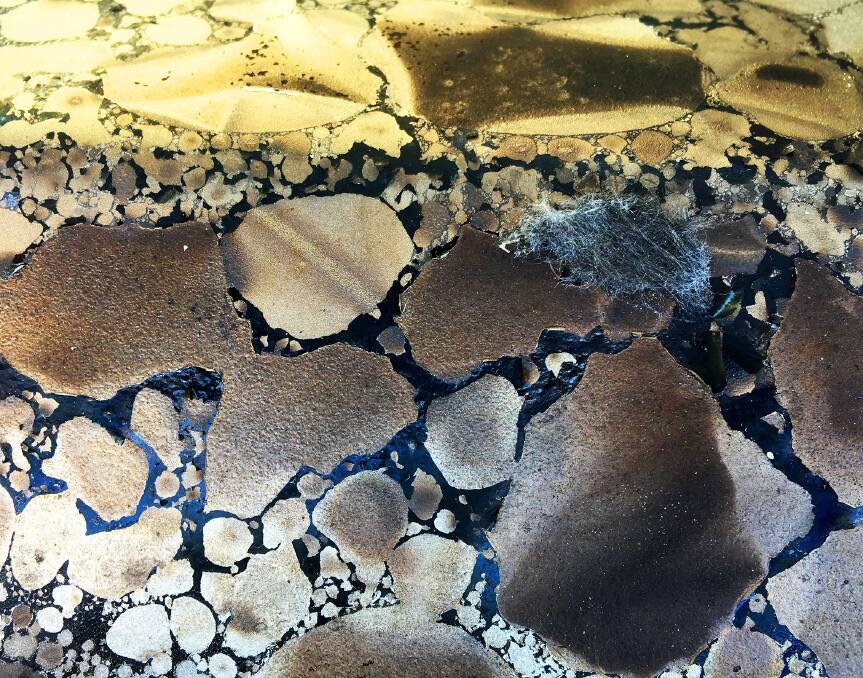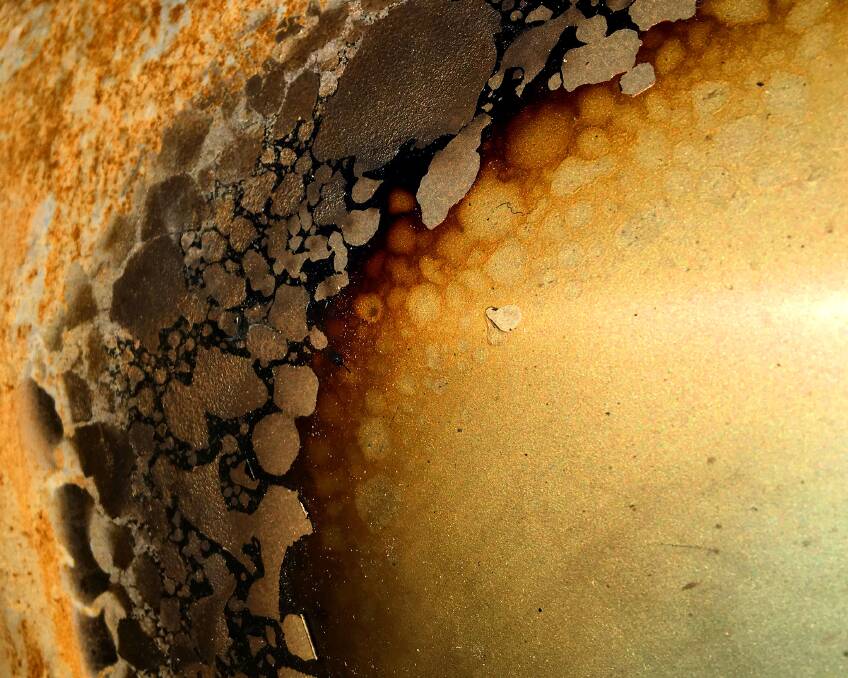
Imogen Wall: Burnout. Belconnen Community Gallery: Until April 3.
Subscribe now for unlimited access.
or signup to continue reading
This vibrantly colourful exhibition is in the modest light-filled gallery space inside Belconnen Community Service.
Often using bright colours in my own photography, I was immediately drawn in.
Studying the works and starting to consider what they were saying to me only added to my enjoyment of the show.
Imogen Wall is a long-term Belconnen resident who creates in many media in addition to photography.
Song, dance, poetry, collage, painting and drawing are also part of her explorations.
She exhibited at Belconnen Community Gallery in 2018 (Journeys for Reconciliation Week) and 2009 (Dreamscapes) and has designed many sets for local theatre. She is currently completing a multi-disciplinary Master's degree at ANU.
READ MORE:
The concept for this show started with the rather unglamorous story of a stolen car dumped at a suburban McKellar oval and then incinerated.
Before the car's remains were towed away, Wall captured a series of photographs of the colours and textures that had emerged during the burning.
She felt these represented a sort of beauty rising out of the destructive act, salvaging something of what the car had been.
In many ways she was responding to a personal feeling of burnout.

By happy chance a neighbour, Jack Crittle, had photographed the car before it was burnt, providing a "before/after" narrative anchor for the exhibition's themes of burnout and resurrection.
Since then, our summer bushfires have given the show - with its focus on the miracle of regeneration that can appear after burning - an additional resonance.
Words on promotional material for the show provide an excellent starting point for our response to what we see: Beauty can rise from ashes just as hearts can regenerate after burnout.
The exhibition handout tells us "The burnt car was an alien presence, sparking conversation among locals walking their dogs, making it a portal between worlds of crime and civility. In the summer sunsets the burnt duco was iridescent. Exotic colours and textures emerged from paint and metal alchemically transformed by burning - rusted, charred and oxidised - the patterns evoking points of transition (sunrises, shorelines) and strange worlds (industrial dystopias, gleaming estuaries). This beauty, rising mysteriously from destruction suggests the potential for life that is latent in burnout."
Wall considers the heart to be central to our physical and spiritual being, the seat of life, emotion and spirit.
That has long been a focus in her work.
She likes to play with interactions between conceptual, intuitive, and emotive layers, aiming to evoke a feeling or mood and capture that passage of time which enables us to move beyond the present.
Burnout brings together a stimulating variety of artistic reflections on that title's many aspects of meaning: photographs, mixed media paintings and a range of sculptural pieces made from car parts, animal skin and found objects.
The photographic works are the central core, but the additional artworks by Fabio Fabbo and Rena Swamy express a dynamism and boldness, add to and help bind the entire show together.
The depth of colour and directness of statement throughout is resurrecting. It renews our spirits.
Canberra film expert Andrew Pike was to have added even more, lending further coherence to this conceptually harmonised show.
He was going to speak at the cancelled opening on post-traumatic growth.
For anyone looking for a nicely distanced social experience right now, the gallery is quiet, with no door handles to touch and plenty of fresh air.
You are encouraged to visit to experience both burnout and renewal.
Self-isolating and can't go to the exhibition? Not the same, but next best, you can view Wall's images online at magentadreams.site/burnout.html.

